Our wonderful centre for railway research has received over 350,000 visitors since opening in February 2008.
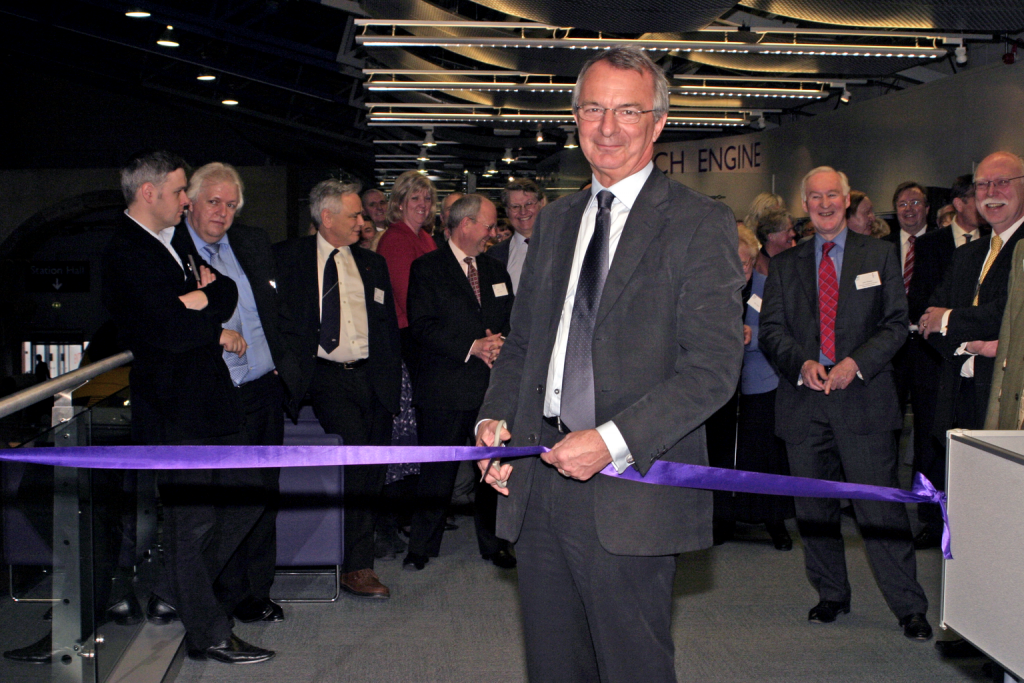
Over that time we have helped people research an amazing range of subjects using our collections. Despite the success of Search Engine in opening up our library and archive collections, many of the visitors who wander through Great Hall would be amazed that there is just as significant a treasure trove of railway history stored just the other side of the wall!
The collection includes around 1.8 million photographs dating from the 1850s, 1 million engineering drawings dating from the early 1800s, over 11,000 railway advertising posters, thousands of timetables and a vast quantity of other archive material.
As Library Services Supervisor, I’m the manager of the public service in Search Engine. I have worked here from the start, as one of the original team of seven part-time Visitor Service Assistants recruited to provide a welcoming and professional front of house service seven days a week. Three of us are still part of our library and archive staff, with Alison Kay now being the museum’s Archivist and Andy Croxton working in the front of house Search Engine Assistant team. A special mention is reserved for our Librarian, Karen Baker, who has managed the Search Engine service for most of those 10 years and is currently away on maternity leave.
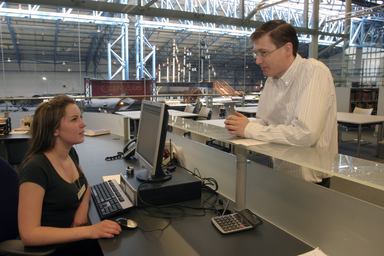
Image Ref : DF080840-71342
Our library and archive team is helped by the fantastic support of over 80 volunteers. Some provide assistance at the information point in Search Engine, while our Inreach volunteers provide a research service. Then there are the huge number of archive volunteers who help with listing our collections, so that they can be made accessible to researchers through our archives catalogue.
To illustrate the positive impact that Search Engine has had, it is helpful to compare with what facilities were here before. The museum has always provided access to its library and archive collections since it first opened in 1975. A small reading room was tucked away from the main public areas, but it was only accessible via a staff entrance and could only be used by a few researchers at one time. This meant that people often had to book weeks in advance even to access our library collections.
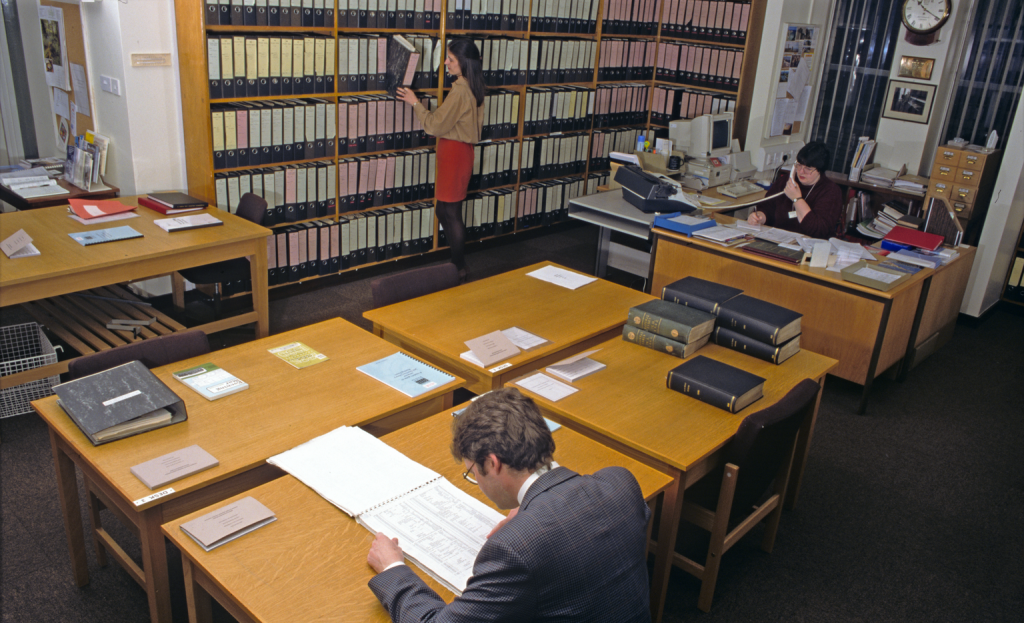
the Reading Room in 1998
Image Ref : DS050360-59947
The lack of facilities for researchers was one reason for building a new research centre, but it was just as important to improve the conditions for storing our archive collections. Some areas were totally unsuitable for storage, as this example demonstrates.
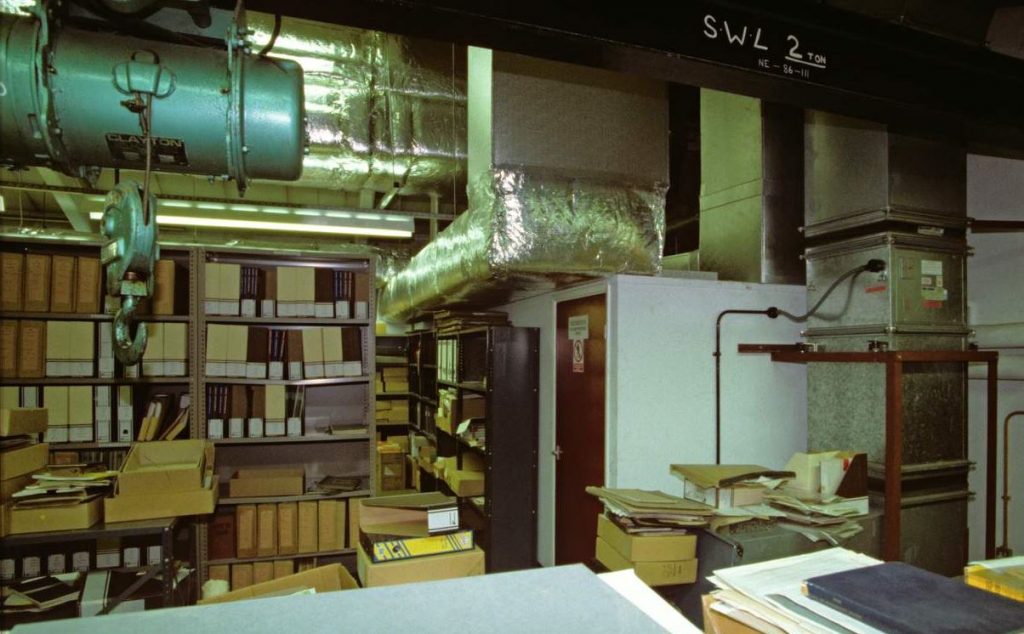
Image Ref: DS050356-59943
Compare that with this image of a small part of our engineering drawing store today, showing the transformation that took place to provide an environment suitable for storing our precious archive collections. Remarkably, this photograph was taken in a very similar location to the one above.
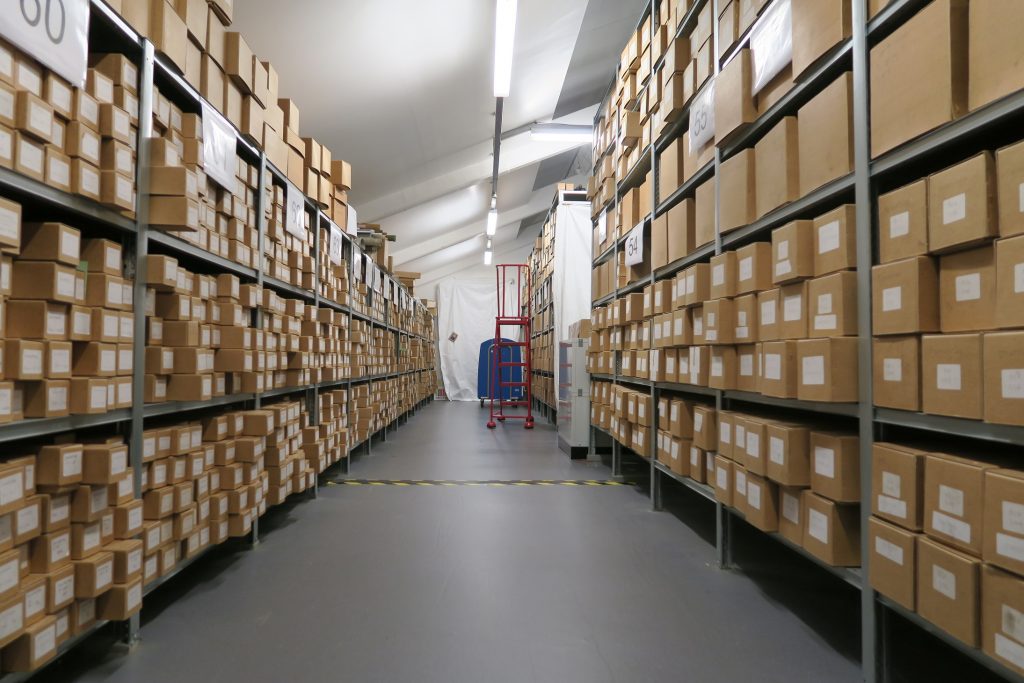
The transformation was completed by the creation a large open-access library and archive centre on the balcony in Great Hall. Here visitors can browse over 5000 books from our library collections, along with around 2500 bound volumes of our most frequently consulted journals. We have over 20,000 books and pamphlets in our stores, most of which can be provided on request.
I am sometimes asked why we don’t have even more material out on display. Some of isn’t suitable to put on open-access shelves, beside the fact that they just wouldn’t fit in the public areas—we have over half a mile of shelving just for our library collections!
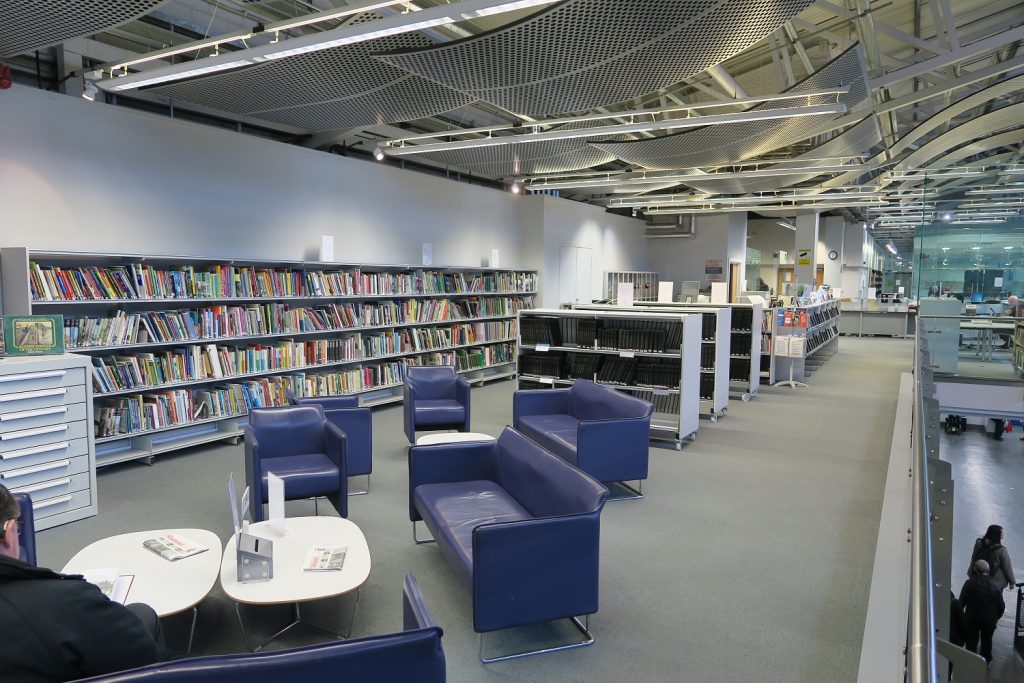

The biggest effect of Search Engine has been the vast increase in accessibility of our collections. Before Search Engine the number of people using the old reading room was just over 1000 per year, and now well over 20,000 visit us annually. Over the years we have had visitors from every corner of the earth, as well as many who live a little closer to York. The regular visitors have become an important part of the friendly atmosphere that makes Search Engine such a pleasant place to work. One of our most frequent visitors recently told us he visited 71 times in 2017, and travelled 11,360 miles by train in the process! Search Engine also provides facilities for research by our curatorial, exhibitions and learning teams, and for our conservation and workshop staff working on restoring and maintaining our rail vehicles, including Flying Scotsman.
The last 10 years have been a great experience, and the next few years have the potential to be even more exciting. The National Railway Museum’s Masterplan will involve a major redevelopment of Great Hall where Search Engine is located. Our library and archive collections are providing sources to help tell the epic story of how railways changed the world. We will also be continuing to add to our collections, catalogue more of our existing archives and make more of our collections available digitally.
Finally, every good birthday should have a cake, but with over 200 years of railway history in our archives, we couldn’t just have any cake! One of the most fascinating and unusual items that we have acquired recently is a household recipe book used in George Stephenson’s house to record all sorts of culinary and medicinal recipes. We are trying out some of the recipes in the book to bake our 10th anniversary cake—so truly a cake with historic connections to the ‘Father of the Railways’.

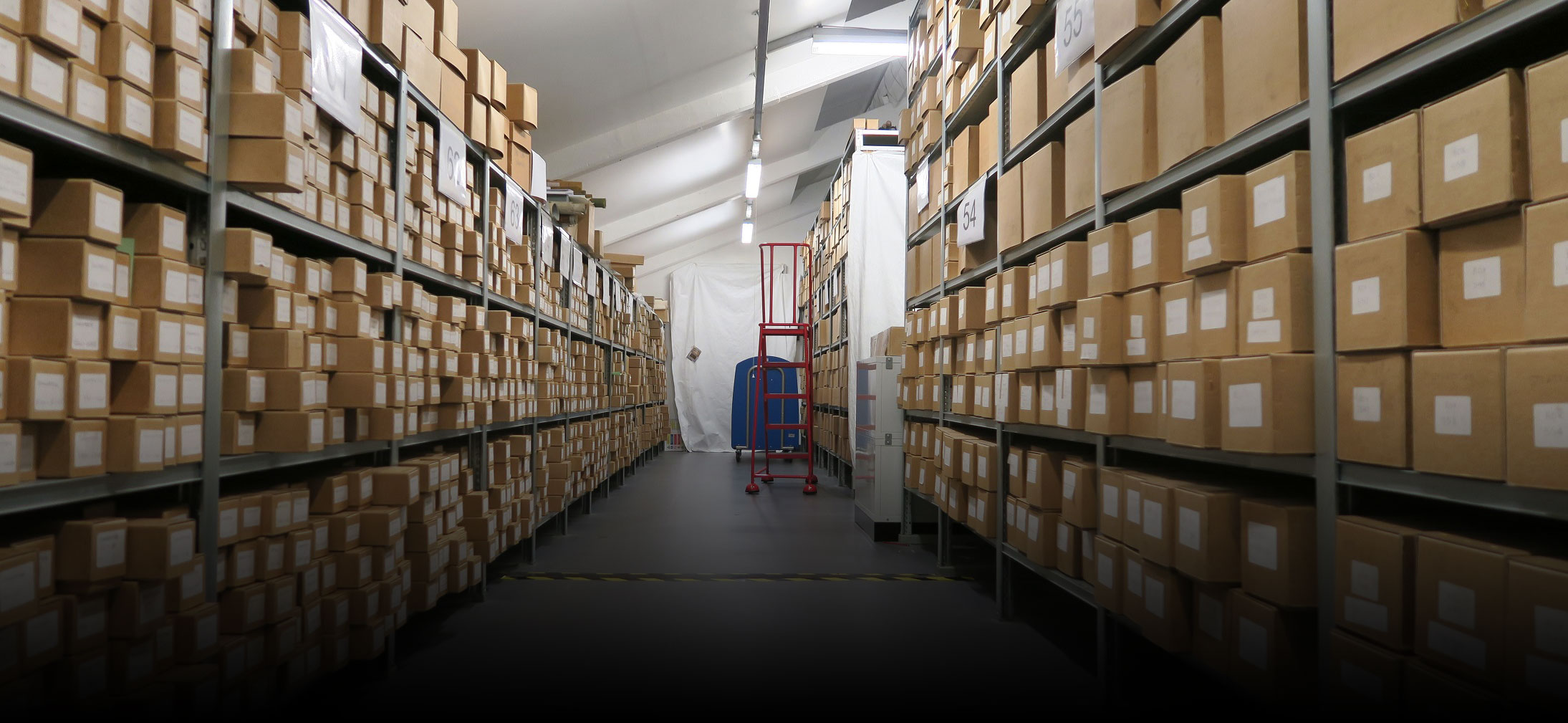
I have just acquired a Gledhill Brook fusee time recorder. It has around a hundred British rail clocking in cards, a clock manual, and a working plan drawing of the connecting rod, with marking date stamps, one stating Wolverton 1944. Some time clock cards have names of employees, and their trades, These are dated 1982. The clock serial number is 23105 dating it to circa June 1927. The tag below the face says PRO no RBA 8-21. The message on the drawing says return to shop 59. The question I have are I bought the clock from Warrington but the man I bought the clock from said he bought it in auction at Runcorn 2016. How can I find out where the clock was hung and used?